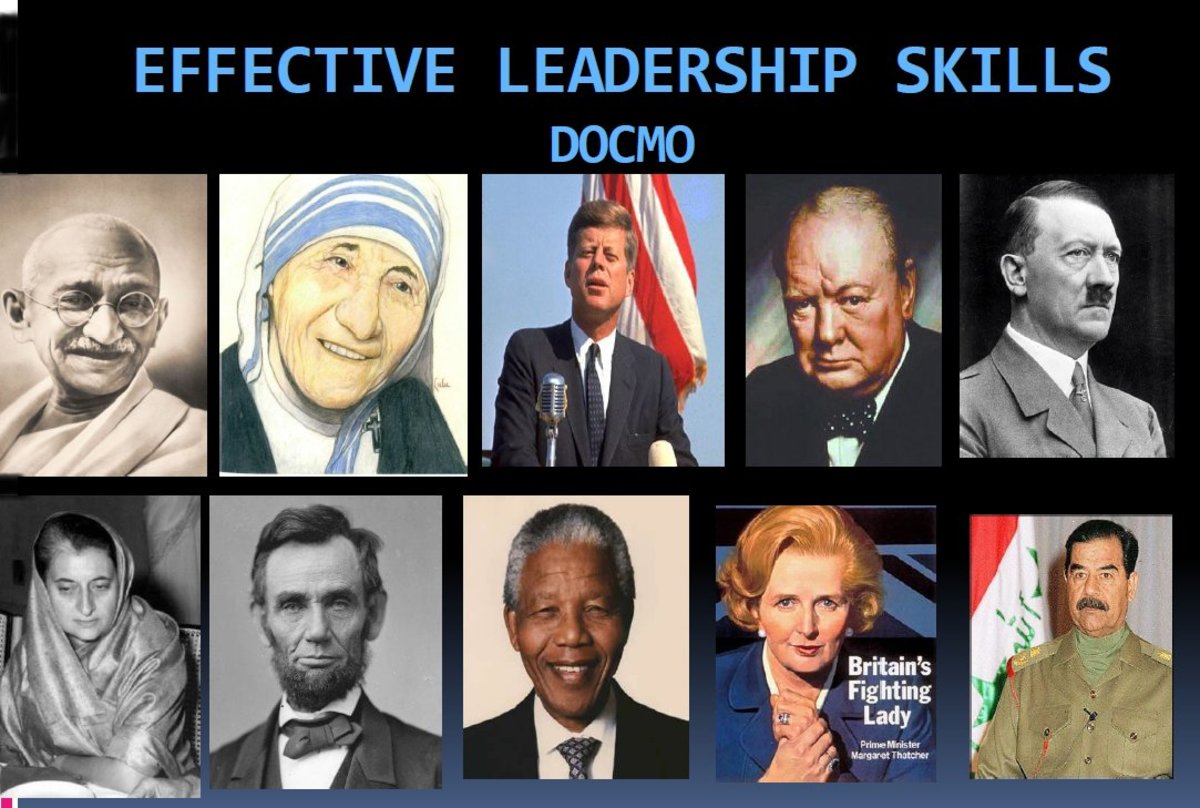Mentoring: Leadership in Action
MENTORING: A Must Type of Leadership in Schools and in the Corporate World

MENTORING: Leadership in Action
Leadership is one of the most important factors in an organization. Equally important to the members of the organization, leaders influence the performance of the members and the entire function of the organization. Over the years, studies have been conducted to examine which type of leadership is most effective in an organization. This research brought forth the distinction of the different types of leadership. To date, the known types of leadership styles are autocratic, democratic, strategic, transformational, team leadership, cross-cultural, facilitative, transactional, coaching, laissez-faire, charismatic and visionary (Raza, 2017). However, there is no known single leadership style that works efficiently for an organization. The leadership styles which may be practiced by the head or administrator sometimes vary depending on their function or the need of the moment. But nevertheless, whatever leadership style is practiced one way or another it must suit the needs of the organization as well as its members.
Part of the responsibility of the organization’s head is decision-making and troubleshooting. A good leader must have a vision in line with the organization’s mission and vision. Similarly, the leader must have the capacity to look beyond the current situation. He must try to see the situation from different perspectives and anticipate challenges along the process. For if the leader will always be expecting that things will go smoothly then he may be stressed out when problems or challenges occur (DeWitt, 2014).
Problem
Every organization foresees itself expanding within years of its operations. It could be a form of expansion such as branching out, operating local offices, or establishing new frontiers. Another form of expansion may be to offer new products or new services.
In an educational institution, the school administrator who may be the director, headmaster, principal, or president of the board is considered the leader. With all the changes that occur to keep the services updated with the current trends in education, it is a must for the school to go through updating programs every now and then.
Looking into the operations of educational institutions, the members and leaders of the organization go through preparations before the academic year starts. This includes now the training of teachers, preparations of materials, and transformation of the classrooms in time for the beginning of the term. But as the regular operations go on, sometimes there are new updates that are cascaded from the government agencies that supervise these organizations or institutions. Or at times the market demands changes and the school needs to address this right away to keep their curriculum relevant (Cliffnotes, 2017).
Among the critical concerns now in an educational institution involves not only the teachers and learners but also the other stakeholders; when talking about stakeholders these would be referring to the school administrators and supervisors, teachers, learners, parents, and other members of the community. The main concerns of educational leaders would be the recruitment of not just qualified but the best teachers, the school climate, and the participation of parents. (Chen, 2017)
Perspectives
On matters of getting or hiring qualified or the best teachers. Primarily, the salary for teachers is not that as attractive as that of the other professions. Second, being a teacher takes more than just instruction. Teachers also perform the responsibilities of a guidance counselor in cases where there is no school psychologist to handle such matters. There is also the documentation required from them. There is also training that they must undergo to keep themselves updated and acquire new skills too to help them carry out their tasks. One of the skills given emphasis now is technology because this is applicable when it comes to their teaching responsibilities and even in the preparation of school documents (Chen, 2017).
On the second concern, the school climate – bullying is a common issue in every school organization or institution. Sometimes it’s not just between or among students themselves but there are times that it also happens between teacher and student or even among teachers. Handling bullying cases requires sensitivity and professionalism (DeWitt, 2014). It requires proper observance of the code of ethics and the existing policies on child protection.
The third one is on parents' participation in school, as one of the stakeholders of the school parents need to be active in school matters, especially on the matters that will help in improving their child’s performance and also in maintaining a conducive school climate for everyone (Raza, 2017).
All these three impacts the teaching-learning process.
Challenges and Opportunities
As a leader now, it is his responsibility to sustain quality service by ensuring that the teachers hired are all qualified or meet the minimum requirements of the organization and the national agency governing them. Second, to this, it will be part of the challenge of the leader to orient the teachers (new) to the school’s mission and vision. It will be difficult to work as one team when there are people who do not share the same vision as that of the group or organization. The same holds true too for the tenured members of the organization, from time to time they also need to be refreshed on the mission and vision to maintain unity in the group.
Providing training may be one of the challenges as some of these would have to occur while the regular operations are ongoing but these will also provide the opportunity for the organization to build up their teamwork. It was through these training opportunities that everyone gets a clear picture of what are their roles in the organization and how the structure works (Cliffnotes, 2017).
Bullying cases differ in their levels, or as it was often said it is on a case-to-case basis. There are matters that may be addressed and settled on the level of the classroom with the teachers taking over the issue. While there are certain cases that need to be elevated to the immediate supervisor like the department heads or school counselor, and for really serious matters, the principal or director will exercise his authority to deal with the case. This is the test of the leadership style; a leader who empowers his members need not get himself involved with small issues. He trusts his members that they are capable of resolving matters within their level of authority. Thus he can focus on the much bigger concern of the organization. It is also an opportunity for the members to demonstrate their conflict resolution skills, professionalism, and maturity (Raza, 2017).
The parent's participation in school is the most challenging part for a leader. There are parents who are very active that they even want to involve themselves in the decision-making and policy-making of the organization (school), while most parents do not even show up at all. When the school calls for a parent’s meeting, most excuses will be their work or just busy with something. They missed out that these meetings or affairs are opportunities for them to see what their child is doing in school. Or these are avenues for them to voice out their concern properly (Chen, 2017).
Strategies
A good leader addresses the teamwork aspect of the organization through the empowerment of the members. The role of each is clearly stated or given and the members are directed to the standards and operating procedures when they are given a picture of the organizational structure.
When the organizational structure is well-defined and layout, the members get an idea of whom to go to for specific matters of concern. They will also be familiar with the chain of commands they will go through for regular or routine work and for special cases which must be handled with the utmost care (Cliffnotes, 2017).
In maintaining a learner-friendly climate in the school, it is not just the role of the leader to deal with everything. Empowering members or delegating work and responsibilities may direct the organization to a much more efficient and effective operation. As there is an organizational structure, then each member of the organization also has their own duties and responsibilities. When the members feel that they are trusted and empowered then they develop a sense of leadership too even at the lowest level of the organization.
For parents to be encouraged to come to school when needed there should be a variation in the style or manner of inviting them. For one they must not only be called at the start of the academic year for selecting the officers to represent them. There must be more reason for them to come aside from the boring meetings and presentations. Collaborative activities with their children may be one activity to invite them to come. Another may be a presentation of the student's learning or a celebration of the learning format. This way the parents will not just say that it was just another usual meeting to attend and they won’t be missed out even if they will not come (Chen, 2017).
Solutions
Taking up all concerns together with the supervision tasks the leaders faced daily, being a transformational leader may be more helpful. When the leader involves everyone in identifying the needed changes and how to answer each then he gets the participation and support of everyone. It also calls for his ability to create a vision with the members to guide them all with inspiration to execute and commit themselves to work on the changes (DeWitt, 2014).
For getting highly qualified teachers, the school leader must see to it that the organization can offer a competitive salary or incentives to encourage more applicants. Otherwise, if there is a budget constraint, he must be creative in marketing that despite the limited salary they can offer, the organization provides opportunities for growth through training and other things that boost the morale and motivation of their employees/teachers. It was more of creating an atmosphere that encourages people to stay satisfied (Cliffnotes, 2017).
Being able to connect to the members’ (teachers) identity inspires everyone and increases their interest in performing their tasks. When the members developed a sense of ownership for their work they are able to understand as well the strengths and weaknesses of each thus they learn to work hand in hand especially when it comes to situations of resolving conflict among their students or even among themselves. The leader’s sense of professionalism and proper observance of ethics in dealing with the members also encourages an atmosphere of mutual respect; therefore, they become role models for their students (Raza, 2017).
The personality of the leader is helpful particularly his leadership and social skills when it comes to matters involving parents. Demonstrating conscientiousness enables him to reach out to parents. Openness and charisma are also needed to develop and strengthen an open line of communication with the parents. When the leader is able to reach out to the parents, then it follows that the parents will be more receptive to invitations from the school and they will also feel at ease in discussing the needs of their child and how they appreciate the efforts of the school.
Expected Outcomes
When members of the organization are made to feel relevant and important in the organization the feeling of significance inspires them to contribute to the organization. Even the person at the bottom line of the organizational structure will find value in their job when they are made to realize that titles do not equate to the quality of importance in the team. If each will do his part well then everyone will benefit from the results (Raza, 2017).
An atmosphere of esteem and respect in the work environment impacts the performance of each member. The leader himself may also be a positive or a negative impact on his members. Failure to appreciate the members discourages them while appreciation even of the smallest things they do will improve their morale. When students see this kind of interaction between their teachers and other school personnel and leaders, they themselves learn to imitate the same (Chen, 2017).
This also affects the parents and the other stakeholders of the school, a leader who knows how to build a team make everyone involve and does not refer to him as the only authority that has control of everything and knows everything.
References
Chen, G. (2017, June 22). Public School Review. Retrieved October 18, 2017, from Public School Review: https://www.publicschoolreview.com/blog/10-major-challenges-facing-public-schools
CliffsNotes. (n.d.). Retrieved October 18, 2017, from www.cliffsnotes.org: https://www.cliffsnotes.com/study-guides/sociology/education/current-issues-in-education
DeWitt, P. (2014, January 23). Education Week. Retrieved October 18, 2017, from Education Week: http://mobile.edweek.org/c.jsp?cid=25920011&item=http%3A%2F%2Fapi.edweek.org%2Fv1%2Fblogs%2F95%2F%3Fuuid%3D36870
Raza, A. (n.d.). WiseToast. Retrieved October 18, 2017, from WiseToast: http://wisetoast.com/12-different-types-of-leadership-styles/








